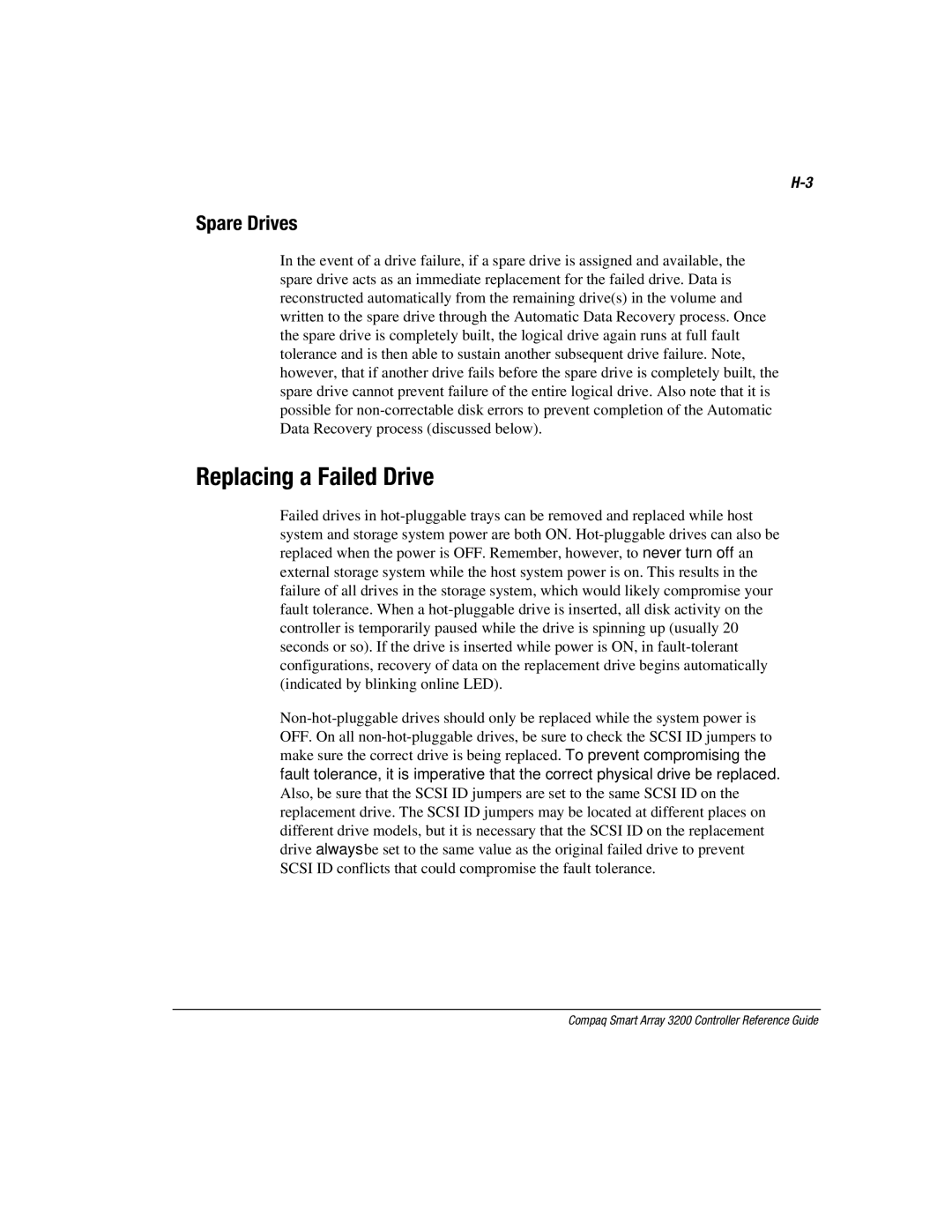Spare Drives
In the event of a drive failure, if a spare drive is assigned and available, the spare drive acts as an immediate replacement for the failed drive. Data is reconstructed automatically from the remaining drive(s) in the volume and written to the spare drive through the Automatic Data Recovery process. Once the spare drive is completely built, the logical drive again runs at full fault tolerance and is then able to sustain another subsequent drive failure. Note, however, that if another drive fails before the spare drive is completely built, the spare drive cannot prevent failure of the entire logical drive. Also note that it is possible for
Replacing a Failed Drive
Failed drives in
fault tolerance, it is imperative that the correct physical drive be replaced.
Also, be sure that the SCSI ID jumpers are set to the same SCSI ID on the replacement drive. The SCSI ID jumpers may be located at different places on different drive models, but it is necessary that the SCSI ID on the replacement drive always be set to the same value as the original failed drive to prevent SCSI ID conflicts that could compromise the fault tolerance.
